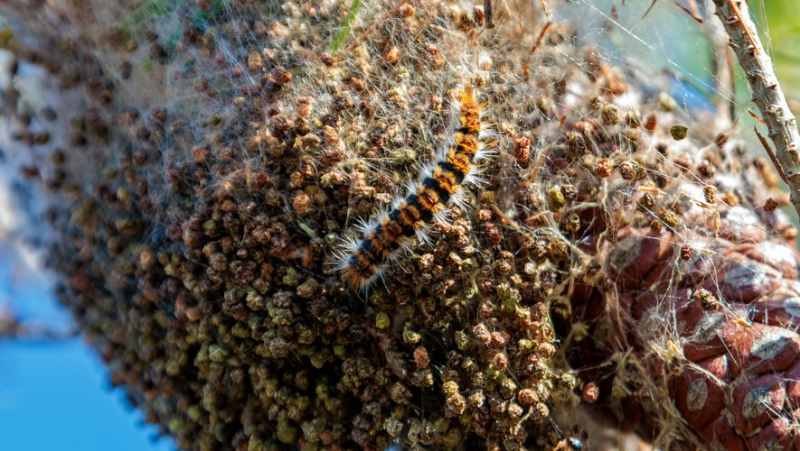Stinging and dangerous, processionary caterpillars infest almost all of France

Les chenilles processionnaires sont ainsi classées nuisibles depuis avril 2022 (photo d'illustration). Jean-Marc Lallemand – BELPRESS/MAXPPP
Les chenilles processionnaires sont désormais présentes dans presque toute la France. Une conséquence du réchauffement climatique.
It is native to the coniferous forests of southeastern France. The processionary caterpillar gradually spread towards the north, due to a lack of sufficiently cold winter, reports in particular Sud-Ouest.
Classified harmful
The phenomenon, which began in the 1970s, is growing sharply. "We can legitimately think that climate change has an impact on the evolution of the areas occupied by caterpillars", underlines Emmanuel Gachet, head of the expertise unit on biological risks at the National Health Security Agency (ANSES), cited by our colleagues from Sud-Ouest.
In 2022, ANSES added the pine processionary caterpillar, as well as that of the oak, among the species whose proliferation has an impact on human health.
The cause is its extremely stinging hairs which contain a toxic protein. Processionary caterpillars have been classified as pests since April 2022 (decree n°2022-686).
His weapon: "hair"
A processionary caterpillar does not bite or sting, we can read on the website of the National Health Security Agency (ANSES): its " weapons" are some of its hairs, or bristles, which are so many microscopic needles or harpoons. "These hairs detach themselves very easily from the body of the caterpillar when it feels threatened. Transported by the wind, they can reach their target several tens of meters away".
Very irritating
Stinging hairs contain a toxic protein that is very irritating and inflammatory: thaumetopoein, according to ANSES. It penetrates where the "harpoon" has gone wrong: most often in the skin – 90% of cases, generally benign according to an Anses study carried out from January 2012 to July 2019, with more than 1,200 exposures recorded -, but also in the ;eye, nose, mouth…
Vigilance with children
The first thing to do to avoid being exposed is, obviously, not to touch a caterpillar and not to approach the processions. It is important to be particularly vigilant with children.
Beware of animals
Also watch out for animals. Dogs, with their noses at ground level, are particularly exposed. "They can have them on their coat, or even take a caterpillar in their mouth, which can cause very serious inflammatory reactions. serious up to necrosis of the tongue", warns the National Health Security Agency.
If an animal is affected, it is recommended to consult a veterinarian immediately or call a veterinary poison control center for advice.




